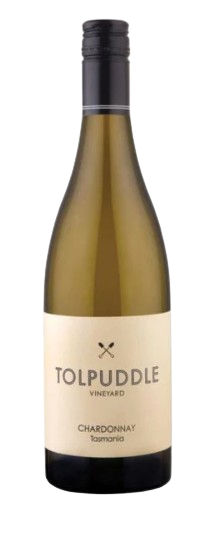
Tolpuddle Chardonnay (2023)
750mL / Coal River, TAS / Australia
SUPER LIMITED - ALLOCATION ONLY!
Fine and precise with firm acidity, and a combination of lightness of texture and intensity of flavour.
The Tolpuddle 2018 Chardonnay has the natural acidity you would expect but is approachable, with flavour in the lemon citrus, lemon soda, lemon pith, spectrum.
Another outstanding Chardonnay from the prestigious Tolpuddle Vineyard
Coal River Valley:
Located about a 20 minute drive from Hobart, in Tasmania's south-east, the Coal River Valley has established a reputation for growing exceptional quality grapes.
With a climate that is at the cool extremes for viticulture, it is no surprise that Chardonnay and Pinot Noir perform so splendidly.
An anomaly for such a cool climate is that the rainfall is significantly lower than many of Australia's other cool climate regions, with an average of approximately 500mm of rain per year.
This cool but relatively dry climate allows the grapes to ripen slowly in autumn, without the disease pressure that rain can bring, resulting in grapes of great aromatic intensity.
Tolpuddle Vineyard:
Tolpuddle Vineyard is an outstanding site within the Coal River Valley region.
Planted in 1988 solely to Chardonnay and Pinot Noir, the vineyard takes its name from the Tolpuddle Martyrs, whose “reward” for starting England's first agrarian union was to be transported to Tasmania as convicts.
The vineyard is on a gentle slope, north-east facing. The soil is light silica sands over sandstone, and of moderate vigour, ensuring well-balanced vines.
Since acquiring the vineyard in 2011, Martin Shaw and Michael Hill Smith have invested heavily in improving all aspects of the vineyard, including soil improvement, conversion to cane pruning, trellis modifications, frost protection and clonal improvements.
They are fully committed to seeing it recognised as one of Australia’s great single vineyard sites.
2018 Vintage Notes:
Mild conditions in spring saw nicely balanced shoot development leading up to flowering.
Then some warmer weather in early summer meant that the vines were tracking slightly ahead compared to average.
Slow and even ripening then followed, with dry conditions resulting in excellent flavour concentration.


 BELLEVUE HILL BOTTLE SHOP
BELLEVUE HILL BOTTLE SHOP